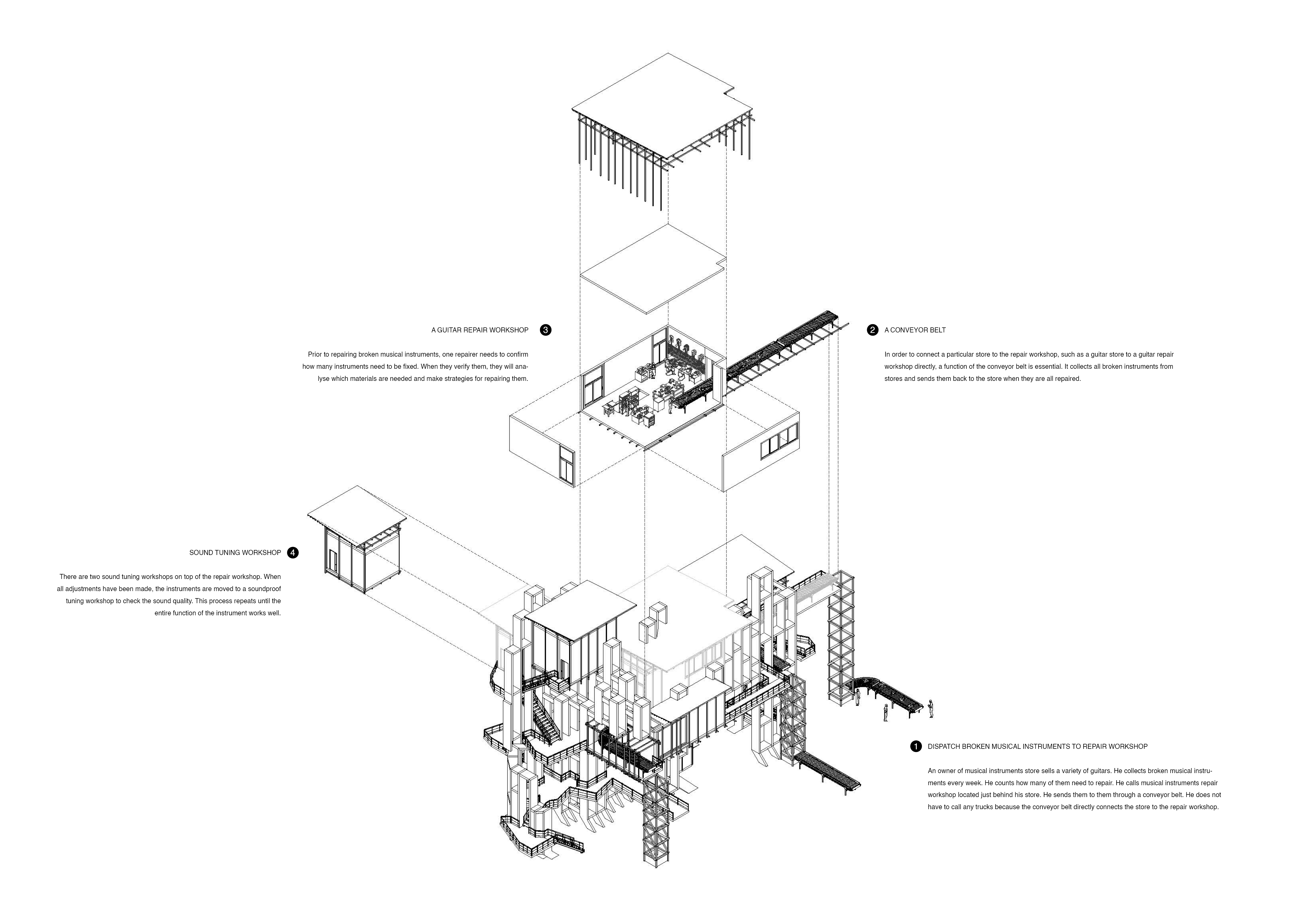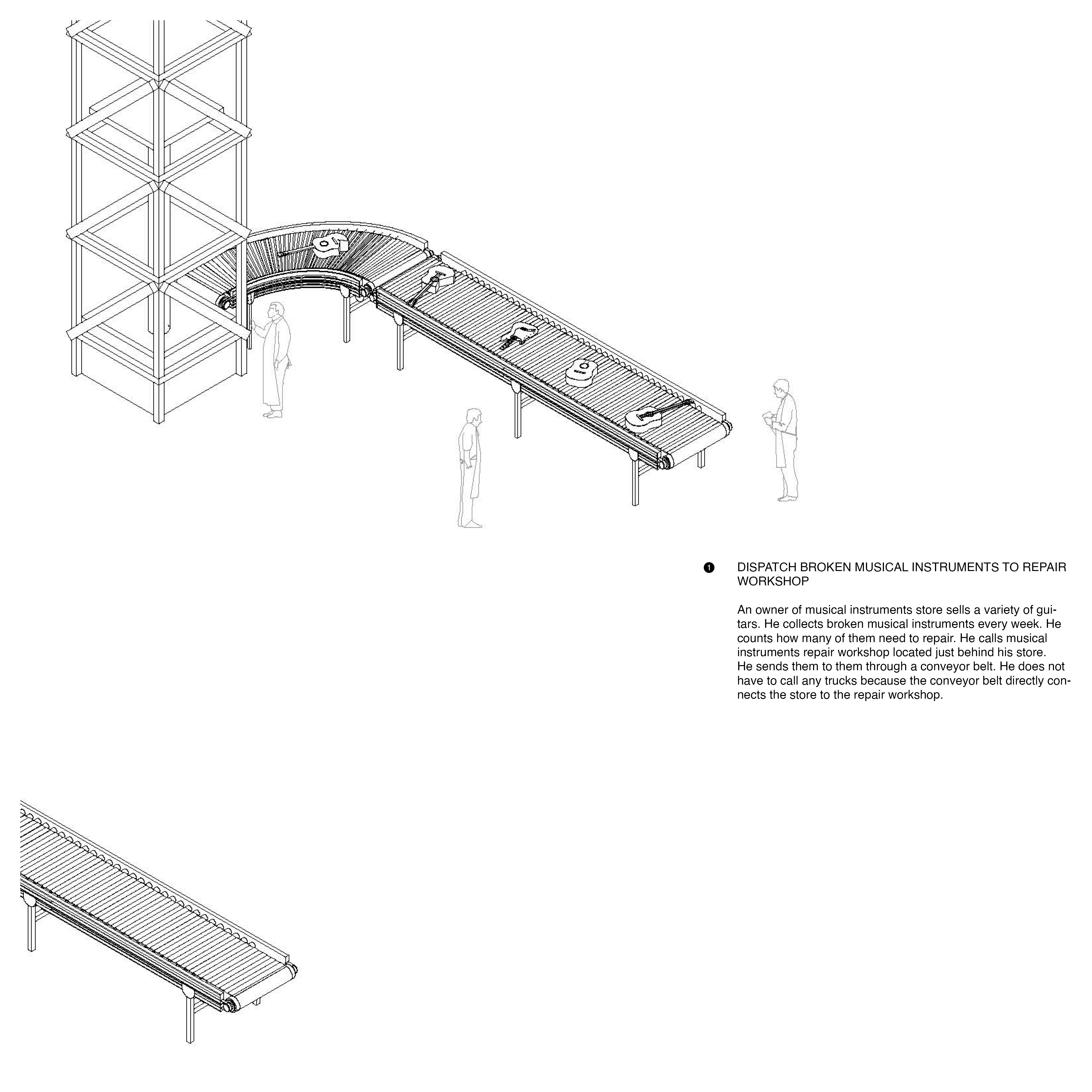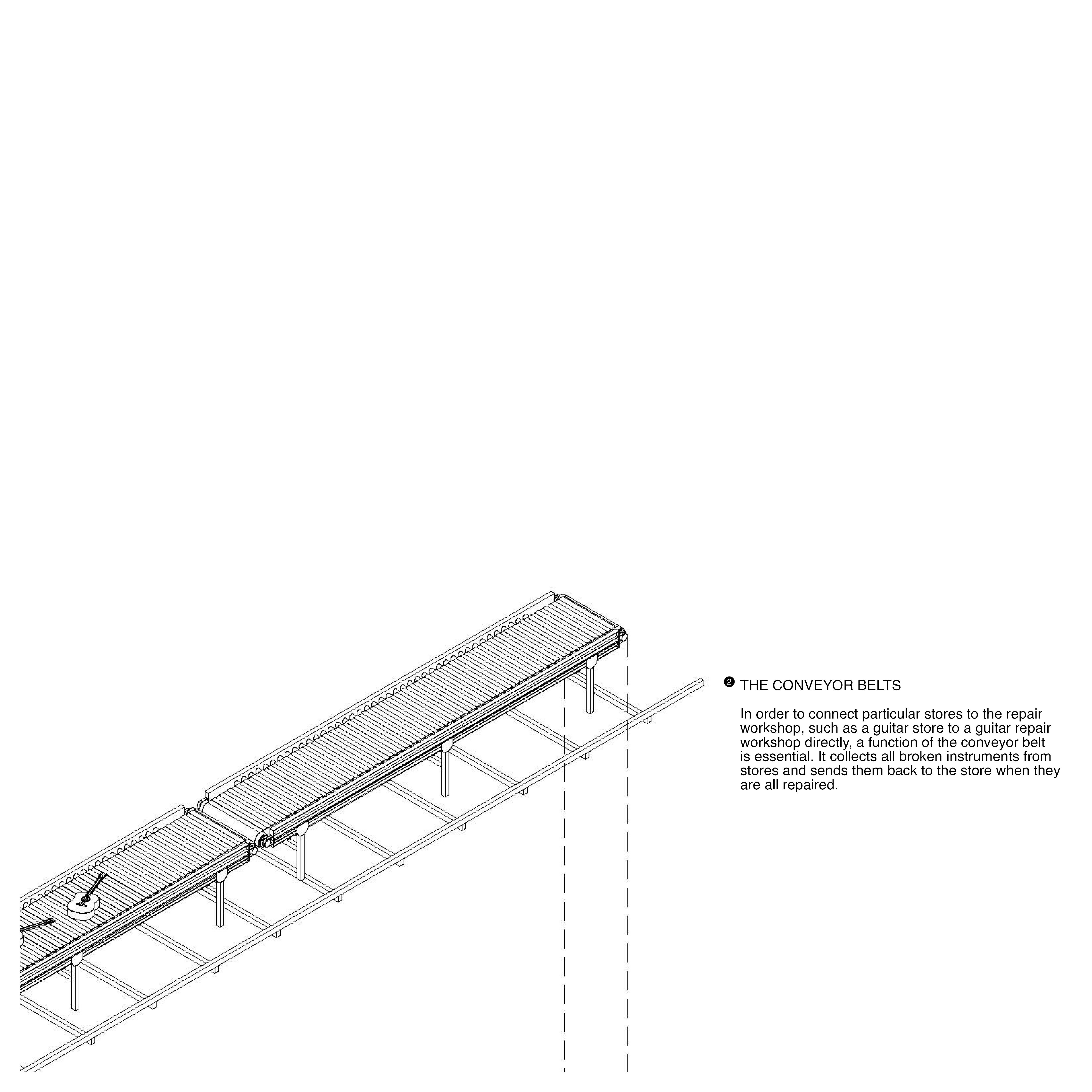Axonometric drawing: Tuning musical instrument repair workshop
1. Dispatch broken musical instruments to repair workshop
An owner of musical instruments store sells a variety of guitars. He collects broken musical instruments every week. He counts how many of them need to repair. He calls the musical instruments repair workshop located just behind his store. He sends them to them through a conveyor belt. He does not have to call any trucks because the conveyor belt directly connects the store to the repair workshop.
2. The conveyor belts
In order to connect particular stores to the repair workshop, such as a guitar store to a guitar repair workshop directly, a function of the conveyor belt is essential. It collects all broken instruments from stores and sends them back to the store when they are all repaired.
3. A guitar repair workshop
Prior to repairing broken musical instruments, one repairer needs to confirm how many instruments need to be fixed. When they verify them, they will analyse which materials are needed and make strategies for repairing them.
4. Sound tuning workshop
There are two sound tuning workshops on top of the repair workshop. When all adjustments have been made, the instruments are moved to a soundproof tuning workshop to check the sound quality. This process repeats until the entire function of the instrument works well.





